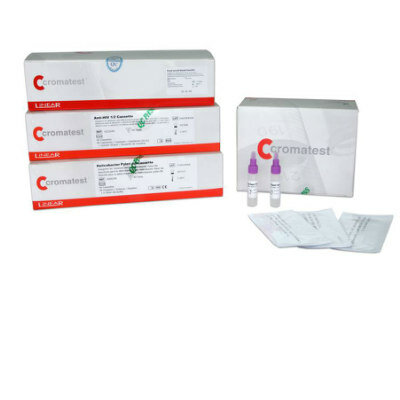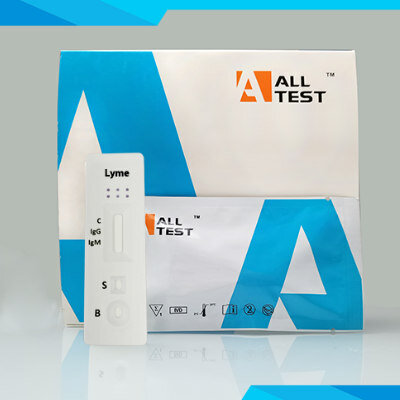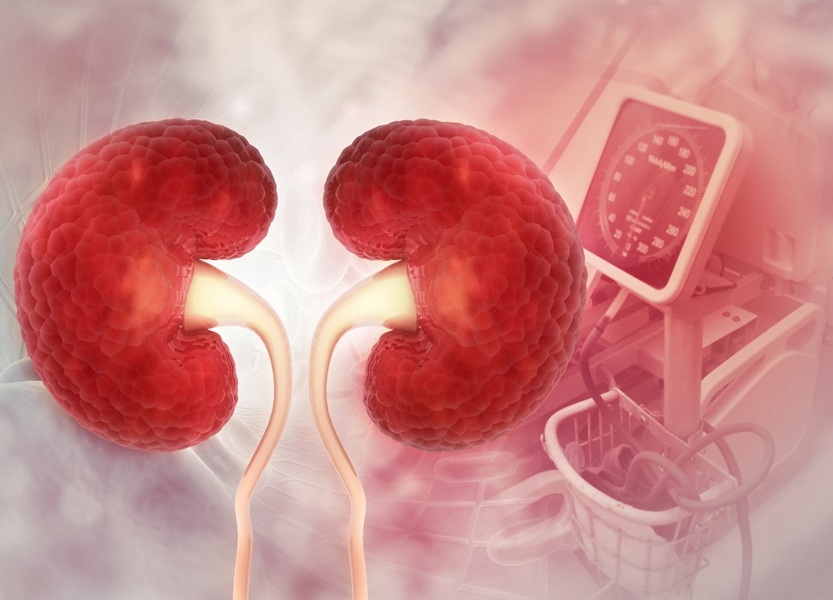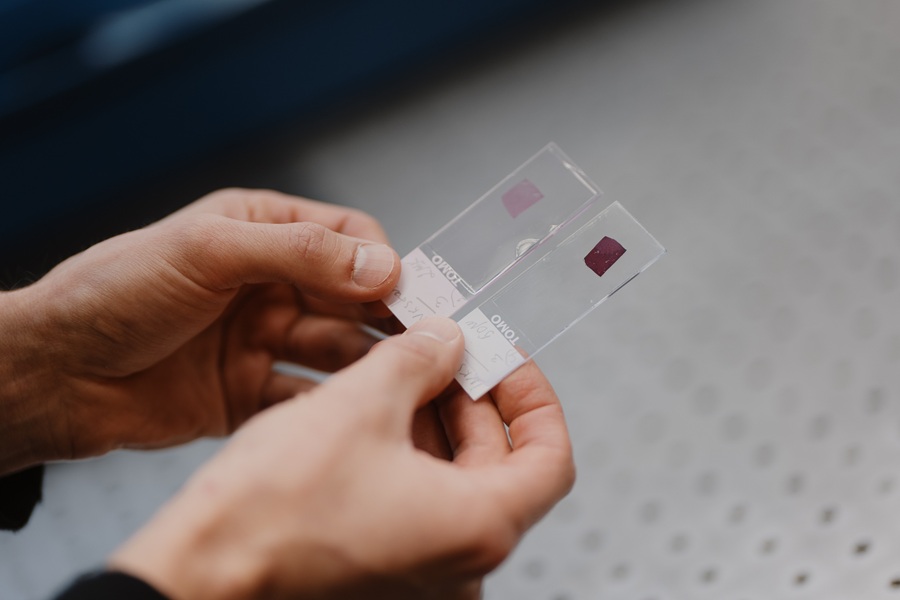Non-O Blood Type Cancer Patients Face Higher Risk of Developing Thrombosis
|
By LabMedica International staff writers Posted on 19 Apr 2022 |
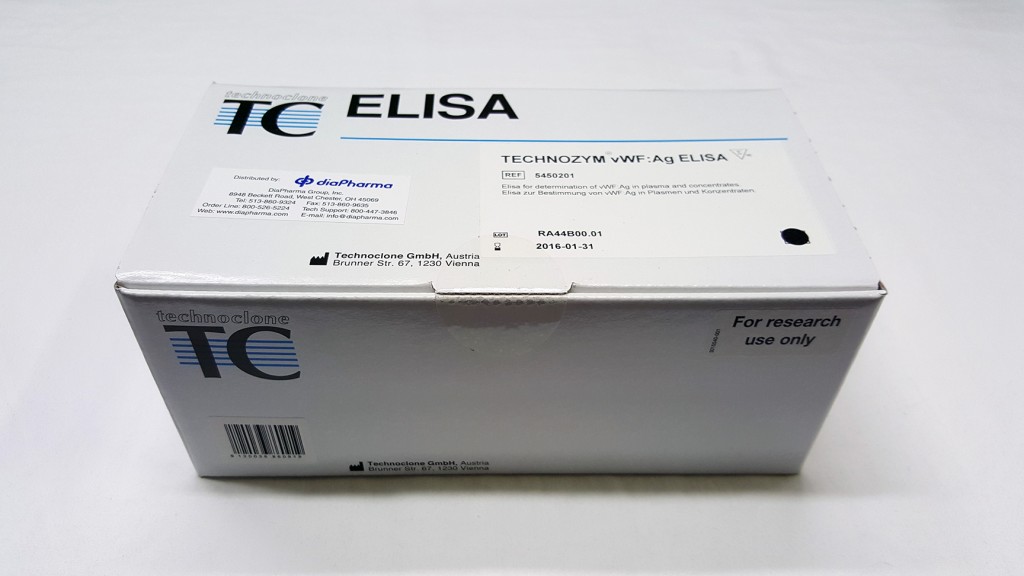
Venous thromboembolism includes deep-vein thrombosis (DVT), a blood clot that typically forms in the deep veins of the leg, and pulmonary embolism (PE), a life-threatening condition that occurs when a blood clot breaks free and becomes lodged in the arteries of the lung.
Venous thromboembolism (VTE) is a common complication in patients with cancer and its occurrence is associated with poor prognosis and patients with a cancer diagnosis are 9-15-times more likely to develop VTE. However, as patients with cancer concomitantly have an increased risk of bleeding, routine thromboprophylaxis is not recommended in all patients. Current guidelines recommend pharmacological thromboprophylaxis in patients with high VTE risk that are most likely to benefit.
Hematologists at the Medical University of Vienna (Vienna, Austria) and their colleagues investigated the role of non-O blood types in participants' likelihood of developing VTE. They collected data from 1,708 adult participants with a new or recurrent cancer diagnosis from the Vienna Cancer and Thrombosis Study (CATS) data set. They grouped participants first by blood type, and then sorted them based on their tumor classification. Patients with pancreatic, gastroesophageal, and brain cancer tumors were considered to have high risk diagnoses.
The scientists measured vWF-Antigen (vWF-Ag) in patients’ plasma with a commercially available Technozym ELISA kit (Technoclone, Vienna, Austria). A CA 7000 analyzer (Sysmex, Kobe, Japan) using Technoclone’s FVIII– deficient plasma and APTT Actin-FS (Dade Behring, Siemens Healthcare, Marburg, Germany) was used to measure FVIII activity in plasma samples. In a subgroup analysis, the impact of non-O blood type compared to O blood type on VTE risk in patients with very high and intermediate/low prothrombotic risk tumor types was analyzed.
ABO blood types were distributed as following in our cohort: 653 (38%) were blood type O, 682 (40%) A, 262 (15%) B and 111 (7%) AB, which is as expected in a European population. Biomarker levels of FVIII activity were available in 1,618 and of vWF-Ag in 626 patients. The investigators reported that the results indicated that patients with non-O blood types were more likely to develop VTE three months after their diagnosis or reoccurrence of cancer. This association did not appear at the time of diagnosis because cancer therapies increase patients' likelihood of developing blood clots, making blood type a less significant predictor of VTE during early stages of treatment. Those with tumors outside of the high-risk disease category with non-O blood type were more likely to develop blood clots independent of time, showing that exclusively depending on tumor type to detect VTE risk may cause many patients to fall through the cracks.
Cornelia Englisch, MD, PhD, a Hematologist and first author of the study, said, “Blood typing is easy to perform, can be done worldwide, and doesn't require any specialized background knowledge or equipment. And of course, every risk factor that we identify helps us to understand these life-threatening complications in cancer patients better. Perhaps this will create awareness for the role blood types can play as clinical biomarkers.” The study was published on April 13, 2022 in the journal Blood Advances.
Related Links:
Medical University of Vienna
Technoclone
Sysmex
Dade Behring
Latest Hematology News
- New Scoring System Predicts Risk of Developing Cancer from Common Blood Disorder
- Non-Invasive Prenatal Test for Fetal RhD Status Demonstrates 100% Accuracy
- WBC Count Could Predict Severity of COVID-19 Symptoms
- New Platelet Counting Technology to Help Labs Prevent Diagnosis Errors
- Streamlined Approach to Testing for Heparin-Induced Thrombocytopenia Improves Diagnostic Accuracy
- POC Hemostasis System Could Help Prevent Maternal Deaths
- New Test Assesses Oxygen Delivering Ability of Red Blood Cells by Measuring Their Shape
- Personalized CBC Testing Could Help Diagnose Early-Stage Diseases in Healthy Individuals
- Non-Invasive Test Solution Determines Fetal RhD Status from Maternal Plasma
- First-Of-Its-Kind Smartphone Technology Noninvasively Measures Blood Hemoglobin Levels at POC

- Next Gen CBC and Sepsis Diagnostic System Targets Faster, Earlier, Easier Results
- Newly Discovered Blood Group System to Help Identify and Treat Rare Patients
- Blood Platelet Score Detects Previously Unmeasured Risk of Heart Attack and Stroke
- Automated Benchtop System to Bring Blood Testing To Anyone, Anywhere
- New Hematology Analyzers Deliver Combined ESR and CBC/DIFF Results in 60 Seconds
- Next Generation Instrument Screens for Hemoglobin Disorders in Newborns
Channels
Clinical Chemistry
view channel
Carbon Nanotubes Help Build Highly Accurate Sensors for Continuous Health Monitoring
Current sensors can measure various health indicators, such as blood glucose levels, in the body. However, there is a need to develop more accurate and sensitive sensor materials that can detect lower... Read more
Paper-Based Device Boosts HIV Test Accuracy from Dried Blood Samples
In regions where access to clinics for routine blood tests presents financial and logistical obstacles, HIV patients are increasingly able to collect and send a drop of blood using paper-based devices... Read moreMolecular Diagnostics
view channel
RNA-Based Blood Test Detects Preeclampsia Risk Months Before Symptoms
Preeclampsia remains a major cause of maternal morbidity and mortality, as well as preterm births. Despite current guidelines that aim to identify pregnant women at increased risk of preeclampsia using... Read more
First Of Its Kind Test Uses microRNAs to Predict Toxicity from Cancer Therapy
Many men with early-stage prostate cancer receive stereotactic body radiotherapy (SBRT), a highly precise form of radiation treatment that is completed in just five sessions. Compared to traditional radiation,... Read moreNovel Cell-Based Assay Provides Sensitive and Specific Autoantibody Detection in Demyelination
Anti-myelin-associated glycoprotein (MAG) antibodies serve as markers for an autoimmune demyelinating disorder that affects the peripheral nervous system, leading to sensory impairment. Anti-MAG-IgM antibodies... Read moreImmunology
view channel
Stem Cell Test Predicts Treatment Outcome for Patients with Platinum-Resistant Ovarian Cancer
Epithelial ovarian cancer frequently responds to chemotherapy initially, but eventually, the tumor develops resistance to the therapy, leading to regrowth. This resistance is partially due to the activation... Read more
Machine Learning-Enabled Blood Test Predicts Immunotherapy Response in Lymphoma Patients
Chimeric antigen receptor (CAR) T-cell therapy has emerged as one of the most promising recent developments in the treatment of blood cancers. However, over half of non-Hodgkin lymphoma (NHL) patients... Read moreMicrobiology
view channel
Handheld Device Deliver Low-Cost TB Results in Less Than One Hour
Tuberculosis (TB) remains the deadliest infectious disease globally, affecting an estimated 10 million people annually. In 2021, about 4.2 million TB cases went undiagnosed or unreported, mainly due to... Read more
New AI-Based Method Improves Diagnosis of Drug-Resistant Infections
Drug-resistant infections, particularly those caused by deadly bacteria like tuberculosis and staphylococcus, are rapidly emerging as a global health emergency. These infections are more difficult to treat,... Read more
Breakthrough Diagnostic Technology Identifies Bacterial Infections with Almost 100% Accuracy within Three Hours
Rapid and precise identification of pathogenic microbes in patient samples is essential for the effective treatment of acute infectious diseases, such as sepsis. The fluorescence in situ hybridization... Read morePathology
view channel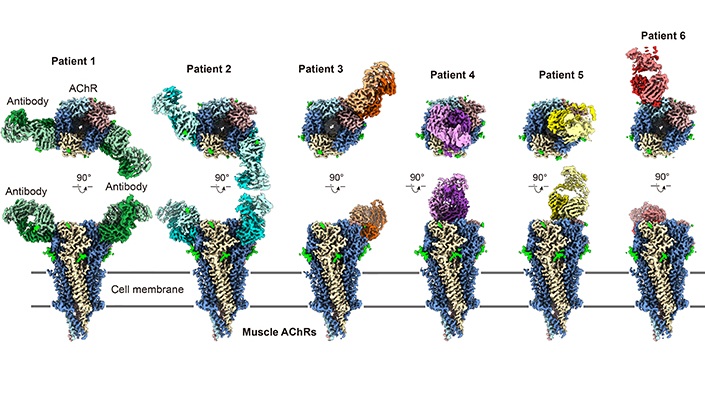
Advanced Imaging Reveals Mechanisms Causing Autoimmune Disease
Myasthenia gravis, an autoimmune disease, leads to muscle weakness that can affect a range of muscles, including those needed for basic actions like blinking, smiling, or moving. Researchers have long... Read more
AI Model Effectively Predicts Patient Outcomes in Common Lung Cancer Type
Lung adenocarcinoma, the most common form of non-small cell lung cancer (NSCLC), typically adopts one of six distinct growth patterns, often combining multiple patterns within a single tumor.... Read moreTechnology
view channel
Pain-On-A-Chip Microfluidic Device Determines Types of Chronic Pain from Blood Samples
Chronic pain is a widespread condition that remains difficult to manage, and existing clinical methods for its treatment rely largely on self-reporting, which can be subjective and especially problematic... Read more
Innovative, Label-Free Ratiometric Fluorosensor Enables More Sensitive Viral RNA Detection
Viruses present a major global health risk, as demonstrated by recent pandemics, making early detection and identification essential for preventing new outbreaks. While traditional detection methods are... Read moreIndustry
view channel
Cepheid and Oxford Nanopore Technologies Partner on Advancing Automated Sequencing-Based Solutions
Cepheid (Sunnyvale, CA, USA), a leading molecular diagnostics company, and Oxford Nanopore Technologies (Oxford, UK), the company behind a new generation of sequencing-based molecular analysis technologies,... Read more
Grifols and Tecan’s IBL Collaborate on Advanced Biomarker Panels
Grifols (Barcelona, Spain), one of the world’s leading producers of plasma-derived medicines and innovative diagnostic solutions, is expanding its offer in clinical diagnostics through a strategic partnership... Read more




